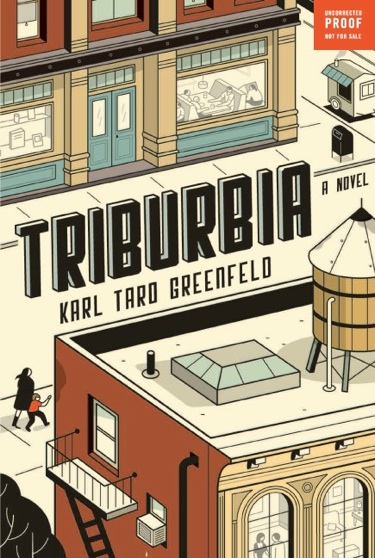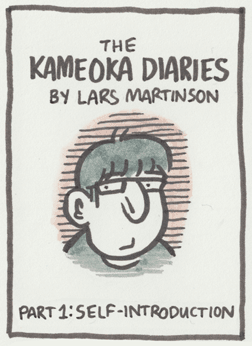NY Times reviews “Triburbia” by JET alum Karl Taro Greenfeld
JET alum Karl Taro Greenfeld (Kanagawa-ken, 1988-89), author of Speed Tribes: Days and Nights With Japan’s Next Generation), has a new book out titled Triburbia: A Novel which was recently reviewed by the New York Times (“Bobos in Paradise“). Here’s the link to the review: http://www.nytimes.com/2012/08/05/books/review/triburbia-by-karl-taro-greenfeld.html?_r=1&pagewanted=all
- For more information about Karl Taro Greenfeld, go to his website or read the Wikipedia entry about him.
- To purchase the book on Amazon, go here: http://www.amazon.com/Triburbia-Novel-Karl-Taro-Greenfeld/dp/0062132393
JQ Magazine: Book Review – ‘Monkey Business Volume 2’
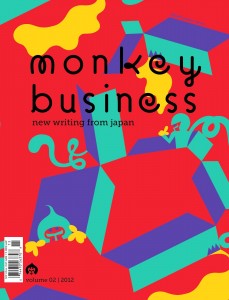
“Anyone can read this book and appreciate it. It provides a window into the heart, mind, and soul of the Japanese people following the tsunami, earthquake and nuclear disaster.” (A Public Space)
By Greg Anderson, (Fukuoka-ken, 1990-1992) for JQ magazine. Greg is part of the fourth class of the JET Program, which began in 1987. He is currently employed as an auditor with the U.S. Treasury Department and is a new member of the JETAA New York book club.
Monkey Business: New Writing from Japan is an anthology of opinions, thoughts, and stories written by some of the most prominent writers from the past and present on the subject of Japan and co-edited by Japanamerica author Roland Kelts (Osaka-shi, 1998-99). I love this book!
Why? Because anyone can read this book and appreciate it. You do not have to be an aficionado of Japan or, frankly, be able to locate it on a map. This book provides a window into the heart, mind, and soul of the Japanese people following the tsunami, earthquake and nuclear disaster. Just as in the United States following the events of September 11, 2001, Americans were forced to pause and consider American values, the American way of life and America’s relationship with rest of the world, along with what it means to be an American.
The events of March 11, 2011 were a watershed moment for the people of Japan. Nothing will ever be as it once was in Japan. The loss of life, failed technology, and deceit/lies are themes that are all addressed in this issue of Monkey Business, released earlier this year. What’s great about this book is that there are two ways that it can be read: You can read it chronologically from page one through page 210, you can browse the index to find an interesting story, or you can simply thumb through the book (like I did), find a story that strikes your fancy, and begin reading (I assure you that you will not be disappointed).
JapanLocal: Promotional Video for JET alum book “For Fukui’s Sake”
Below is a promotional video for the book For Fukui’s Sake: Two Year’s In Rural Japan by JET alum Sam Baldwin (Fukui-ken, 2004-06) (who also created the video). The video does a great job of capturing the images and essence Fukui through Sam’s eyes. Read more about Sam in the book review Tim Martin (Fukui-ken, 2006-08) did for JQ magazine.
SCBWI Tokyo Illustration Day with John Shelley
SCBWI-Tokyo Publicity Assistant Suzanne Kamata (Tokushima 1988-90) shares the following:
Sunday August 19, 2012
SCBWI Tokyo Illustration Day with John Shelley:
Breathing Life Into Your Pictures
Power up your pictures! Give your illustrations vitality and zest! This SCBWI Tokyo Illustration Day featuring illustrator John Shelley will focus on techniques that children’s illustrators use to create resonance in their work and will explore how visual psychology works to convey mood, emotion, and movement. The Action and Emotion Illustration Assignment to be completed in advance of the workshop provides an opportunity for illustrators to develop their craft through open critiques at the event.
Time: Sunday, August 19, 2012, 9:00 am-5:00 pm
Place: Tokyo Women’s Plaza, Audiovisual Room, A & B
5-53-67 Jingumae, Shibuya-ku, Tokyo (by the Children’s Castle and United Nations University). For a map see www.scbwi.jp/map.htm Read More
JQ Magazine: Book Review – ‘Project Japan: Metabolism Talks’
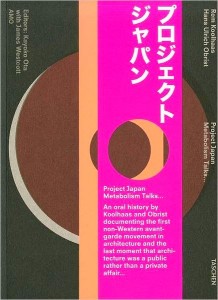
"What’s most striking about 'Project Japan' is the text itself, a frenetic landscape of drawings, photographs and textual tidbits both fluid and choppy. The book is also a portrait of a moment; once futuristic, now historical, yet still as influential as ever." (Taschen America)
By Sharona Moskowitz (Fukuoka-ken, 2000-01) for JQ magazine. Sharona is interested in fresh, new voices in fiction and creative nonfiction.
What does it mean to be a Japanese architect, and is this distinction even worth making? According to Rem Koolhaas, the legendary architect and co-author of the book Project Japan: Metabolism Talks, the answer is unequivocally yes. As he puts it, “The Japanese are a group of modernists that never entirely cut connections with the past. That is probably still something one intuitively senses when they look at Japanese architecture.”
Project Japan (co-written with Hans Ulrich Obrist) offers a documentary-style look at the avant-garde Metabolism movement that flourished in Japan after World War II. While the country was recovering from the war and reinventing its image, the Metabolists strived to make architecture “a public rather than a private affair,” designing for a widescale shift from the rural to the urban.
What’s most striking about Project Japan is the text itself, a frenetic landscape of drawings, photographs and textual tidbits both fluid and choppy. It’s essentially a reference book, reading like a series of presentations whose format begs audience interaction. The book offers an intimate glimpse into the lives of the men responsible for propelling the movement forward and the processes involved. The book is also a portrait of a moment; once futuristic, now historical, yet still as influential as ever.
Lars Martinson’s “Kameoka Diaries” e-comic now available on iTunes
Lars Martinson (Fukuoka-ken 2003-2006), author of the graphic novels Tonoharu: Part Two andTonoharu: Part 1, has just announced the “Kameoka Diaries“, Lars’ e-comic about his return to teaching English, this time in Kameoka, Kyoto, is now available on iTunes.
More info here and below: http://larsmartinson.com/my-first-two-e-comics-now-available/
The Kameoka Diaries: Volume One [ Direct iBookstore Link ]
The Kameoka Diaries: Volume One is a humorous (?) account of my experiences living and working in Central Japan, told over eight chapters. It includes an exclusive chapter not available anywhere else!
JETwit Note: I just downloaded a copy onto my iPhone. 250 pages for only $0.99, and I always love Lars’ work. Plus, it’s my first time using iBook which it turns out is pretty nifty. :-)
Justin’s Japan: Roland Kelts Makes New ‘Monkey Business’ at Japan Night @ Joe’s Pub
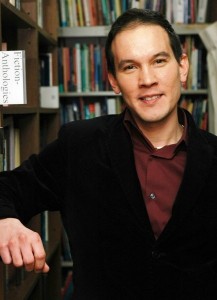
JET alum and ‘Monkey Business’ editor Roland Kelts will appear at Japan Night @ Joe’s Pub in New York May 6. (Kaz)
By JQ magazine editor Justin Tedaldi (CIR Kobe-shi, 2001-02) for Examiner.com. Visit his Japanese culture page here for related stories.
Regular visitors to NoHo’s St. Mark’s Place are known to enjoy many of the Japanese pubs and eateries that dot the street down to Avenue A. This Sunday (May 6), neighbor Joe’s Pub will host live music and the latest English release of a notable Nippon-centric literary anthology.
Japan Night @ Joe’s Pub, held at the eponymous nightclub a stone’s throw below Astor Place, promises an unforgettable night of transcultural readings, music and live performances. On tap for Sunday: revered Japanese writers Masatsugu Ono, Tomoko Shibasaki, and award-winning author and translator Motoyuki Shibata will arrive from Tokyo to share the stage with American authors Stuart Dybek, Kelly Link, and Canadian translator, scholar and editor Ted Goossen.
The scriveners’ summit will celebrate the second Issue of Monkey Business International, the latest English-language edition of the acclaimed Japanese literary magazine that Pulitzer-winning author Junot Díaz calls “one of the year’s best publications” and Luna Park Review dubbed “one of the seven best literary magazines of 2011.”
Emceeing is JET alum (Osaka-shi, 1998-99), Japanamerica author and Monkey Business contributing editor Roland Kelts (click here for an exclusive interview conducted with Kelts last year), who describes the literary project as “all about dear friends calling upon me to be a bridge between the worlds I inhabit, write about and know best—giving me an enormous opportunity to feel a momentary spurt of self-worth.”
For the complete story, click here.
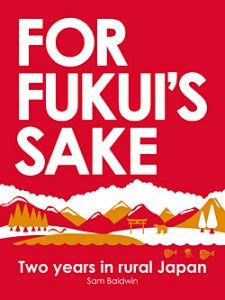
"The author's final thoughts about his stay in Japan struck a chord with me. Though many people seek adventures in foreign lands, if they stay in one place long enough, they often find it's the people they befriended that end up meaning the most to them upon their departure." (Baka Books)
By Tim Martin (Fukui-ken, 2006-08) for JQ magazine. Tim works as a research assistant in a neuroscience lab, and is an avid swing and blues dancer in New York City. He runs a humanist/atheist blog, The Floating Lantern, and is looking for ways to make a difference in people’s lives.
Fukui is a rural, out-of-the-way prefecture, relatively unfamiliar even to the Japanese. It boasts the largest number of nuclear reactors in the country, but only a single Starbucks. It’s home to a Buddha statue larger than the one in Nara, which, curiously, very few tourists come to visit. Fukui also has an amusing reputation for getting terrible reviews from authors who’ve passed through—in his book Hitching Rides with Buddha (aka Hokkaido Highway Blues), fellow JET alumni author Will Ferguson (Nagasaki-ken, 1991-94) describes it, only half-jokingly, as “a hole.”
So it’s an interesting place.
It’s also where Sam Baldwin (Fukui-ken, 2004-06) ended up when he applied to teach English in Japan as a member of the JET Program. In For Fukui’s Sake, Baldwin recounts tales from his two-year stay in this quirky rural backwater, weaving together the varied strands of his experience to form a continuous narrative of adventure and personal growth.
While working a monotonous job as a “research lab technician” in the UK, Baldwin decided he needed to broaden his horizons. Looking to discover what else life could offer, he set his sights on Japan, which, according to a friend who had visited, was a place where Baldwin could indulge in his love of snow and mountains. This may be a casual way to make the decision to start a new job in a strange country, but the required spontaneity and openness to new experiences may be what ultimately allowed the author to glean so much from his time in Japan.

****************
Thanks to Lindsay Tsuji for this write-up and thanks to Nadine Bukhman for the photos.
A chilly Toronto’s eve didn’t stop friends and fans of one artistically inclined JET alum from dropping by the Goodfellas Gallery in Toronto to celebrate the launch of his new book Life After the B.O.E. JETAA Toronto’s David Namisato (Aomori-ken CIR, 2002-04) was the cause of some serious hurrah on February 8.
Most JETs are no stranger to David’s comics. Started back in 2005, they chronicle the ins and outs of what life is like as a foreigner on the JET Programme. The enkais, the onsens, the team teaching…it’s all in there. Read More
JQ Magazine: Book Review – ‘Tomo: Friendship through Fiction: An Anthology of Japan Teen Stories’
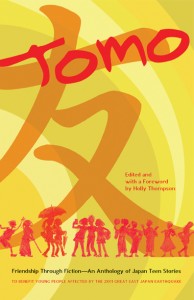
“Reading ‘Tomo’ is a reminder that even in the most desperate straits, friendship and personal relationships have the power to nourish and sustain us.” (Stone Bridge Press)
By Sharona Moskowitz (Fukuoka-ken, 2000-01) for JQ magazine. Sharona is interested in fresh, new voices in fiction and creative nonfiction.
If you could know your future cause of death, would you choose to know? This is the question posed by “Yamada-san’s Toaster,” one of the short stories in the new fiction anthology Tomo: Friendship through Fiction: An Anthology of Japan Teen Stories. As the title suggests, the collection is geared toward adolescents and dedicated to the youth of Tohoku, though it undoubtedly has— in the parlance of publishing— tremendous crossover appeal. There is plenty for adults to enjoy here, too. Edited and with a foreword by Holly Thompson, this collection features 36 stories—including 10 in translation—contributed by several JET alums from around the world, all of whom share a connection to Japan. Proceeds from its sale will go directly to the continued relief efforts.
In Kelly Luce (Kawasaki/Tokushima, 2002-04)’s story, Yamada-san’s toaster burns into each slice of bread a Chinese character supposedly predicting one’s cause of death. The tale’s young narrator observes the effects of the toaster on the townspeople as news spreads and they become stirred into a ridiculous pandemonium. There’s a great element of humor to the story though it also reveals a universal human folly: the vulnerability towards superstition. People try desperately to find order and make sense of a chaotic and random world, even if it means looking for burnt kanji of the toast on a breakfast plate.
The stories are grouped thematically, represented by “Shocks and Tremors,” Friends and Enemies,” “Ghosts and Spirits,” Powers and Feats,” Talents and Curses,” Insiders and Outsiders” and “Families and Connections.” (The final story, the poignant “Peace on Earth,” is penned by Suzanne Kamata (Tokushima-ken, 1988-90), whose own book of short stories, The Beautiful One Has Come, was released last year.
JQ Magazine: Book Review – ‘Life After the B.O.E. the Book’

"This whimsical compilation of cartoons that appeared previously in JETAA publications worldwide is likely to hit the funny bone of both former and current program participants alike."
By Sharona Moskowitz (Fukuoka-ken, 2000-01) for JQ magazine. Sharona works at a literary agency in New York City. She is interested in fresh, new voices in fiction and creative nonfiction.
Flexibility and a sense of humor have long been predictors of a successful JET participant. And with good reason. After all, let’s face it: life in Japan for a gaijin can range from the frustrating to the absurd to the downright hilarious, often within the same day.
The malleable young JET is expected to smile and wear a variety of hats placed upon his or her head in the name of “international exchange.” For most JETs, it’s what happens in between the lines of the job description that makes the experience so meaningful.
Who better to capture the flexible thinking and sheer comedy of the JET experience than a former participant himself? JET alum and professional illustrator David Namisato (Aomori-ken CIR, 2002-04) showcases some of the more memorable aspects in his new book Life After the B.O.E. This whimsical compilation of cartoons that appeared previously in JETAA publications worldwide is likely to hit the funny bone of both former and current program participants alike.
Each cartoon presents a different familiar scenario. There is the moment of sudden awareness when it becomes all too clear to the ALT that he or she is more of an exotic show-and-tell object than a real teacher, a realization that can be disappointing, underwhelming, or just a huge relief, depending on who you ask. Read More
JQ Magazine: JQ&A with Author/JET Alum David Namisato on ‘Life After the B.O.E. the Book’
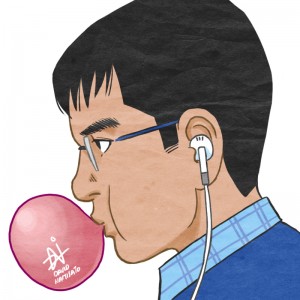
"The JET Programme mantra is “Every Situation is Different,” but so much of the frustrations and the joys that we encounter are very similar. I wanted a vehicle for us to laugh together." (Illustration courtesy of David Namisato)
By Rick Ambrosio (Ibaraki-ken, 2006-08) for JQ magazine. Rick manages the JET Alumni Association of New York (JETAANY)’s Twitter page and is the creator of the JETwit column Tadaima!
It’s probably happened to you over the last few years; you’re sitting at work, or maybe at home and an old buddy of yours from JET forwards you a link. You open it, and it’s a hilarious comic about life as a JET skillfully drawn with a mix of humor and nostalgia that pretty much makes your day. Life After the B.O.E. by David Namisato (Aomori-ken CIR, 2002-04) has given many a JET Alum a good laugh. If you’re anything like me, you’ve thought, “If this was a book, it would be a perfect Christmas present for those guys I still keep in contact with.” Well, David is happy to oblige.
David has now published a book of those comics, and we were lucky enough to catch up with him and pick his brain about it. With his comics popping up on other sites, it seems even a wider audience is getting into David’s work. In this exclusive interview, we ask him about his time on JET, his inspirations, and what he’s looking to do in the future.
What made you decide to publish this book?
I wasn’t planning to do a book initially, but a conversation with Lynn Miyauchi, JET Program Coordinator at the Consulate-General of Japan in Seattle, about the benefits of having a printed book (having something to read in your hands, something you can give as a gift) changed my mind.
So how did you get into art? Were you inspired at all by Japanese art/manga/etc.?
I drew a lot throughout childhood and dreamt of being a comic book artist. I grew up on a healthy diet of manga.
What brought you to Japan?
I was in the process of dropping out of animation school, and didn’t want to do anything art-related. I thought of some of the other skills I had, and I thought that the JET Programme would be an excellent way to transition myself in to a completely different career path.
JQ Magazine: Book Review – ‘Aftershock: Artists Respond to Disaster in Japan’
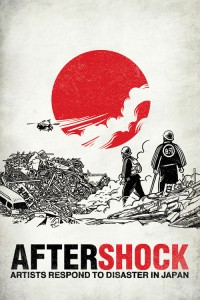
“I assumed a response to the earthquake would be grim. I was, however, relieved to see that there is a nice dose of playfulness alongside the serious, an homage to resilience and the inimitable Japanese sense of humor.” (Big Ugly Robot Press)
By Sharona Moskowitz (Fukuoka-ken, 2000-01) for JQ magazine. Sharona works at a literary agency in New York City. She is interested in fresh, new voices in fiction and creative nonfiction.
Composed in the wake of the catastrophic events of 3/11, Aftershock is something of a series of love letters to Japan written in the object of affection’s own familiar dialect: manga. Edited and compiled by American-born and Nagoya-based cartoonist Adam Pasion (Sundogs), the range of over 35 artists/admirers runs the gamut from the seasoned foreign resident to the casual Japanophile, each with an individual style and tone. The pieces are as eclectic as the artists’ experiences and personal ties to Japan, and all proceeds from Aftershock will be donated to relief efforts in northeast Japan.
When I first approached the anthology I wasn’t sure what to expect though I braced myself for gravity. Even in the form of manga, I assumed a response to the earthquake would be grim. I was, however, relieved to see that there is a nice dose of playfulness alongside the serious, an homage to resilience and the inimitable Japanese sense of humor.
For example, “I Was a Teenage Otaku” by JET alum and Tohonharu cartoonist Lars Martinson (Fukuoka-ken, 2003-06) traces the trajectory of the author’s interest in manga and anime, a hobby which “provided the spark that made [him] want to get out there and really explore” and eventually led to his move to Japan as an exchange student. Though his passion for the art form eventually waned, it gave way to a much broader appreciation of the Japanese arts in general.
JET Alum Author Beat 10.05.11
JET Alum Author Beat is a new feature by Ling Tran (Saga-ken, 2009-11) intended to keep readers informed of what various JET alum authors are up to. Contact Ling at jetwit [at] jetwit.com if you’d like to see something included in upcoming posts. She is also interested in providing exposure for aspiring authors/writers among alumni and current JETs – excerpts and updates are all welcome.
- Suzanne Kamata (Tokushima-ken, 1998-90), author of Losing Kei and fiction editor for Literary Mama, reflects on the recent loss of a dear friend through a post about her first sushi experience on Gaijin Mama (a personal blog). Check it out and give some JET support.
- Sam Baldwin Ono (Fukui-ken, 2004-06) hails from the UK and made a life altering decision when he decided to move to Fukui-ken through the JET Program. The quiet facade of inaka Japan gradually revealed its colorful nature, eventually leading Sam to share stories and insights in For Fukui’s Sake: Two years in rural Japan. Whether for reference (newbie JETs, holla!), nostaliga, or reflection – ESID aside – this book is available electronically. If you want to be notified of its hard copy release, click here. Visit the website For Fukui’s Sake for details. (Fukui t-shirts are also available for purchase.)
- Author of The Order of Odd-Fish James Kennedy (Nara-ken, 2004-06) recently did a Q&A with JQ magazine as he will be curating the 90-Second Newbery Film Festival (Nov. 5 @New York Public Library | Nov. 16 @Harold Washington Library, Chicago). Read here.
- Robert Paul Weston’s (Nara-ken, 2002-04) Zorgamazoo will be honored at the Author Banquet of the California Library Association Conference for a California Young Reader Medal on Nov. 12. Details of the upcoming event are available on Weston’s blog. Congratulations!
- What is Japanamerica blogger Roland Kelts (Osaka-shi, 1998-99) reading these days?
- Cartoonist Lars Martinson (Fukuoka-ken, 2003-06) has been busily settling into his new home and schedule in Kameoka, Kyoto. He managed to fit in a brief post after a short hiatus. Eager followers can see how he is doing here – more substantial updates to come!
JQ Magazine: JQ&A with Author/JET Alum James Kennedy on the 90-Second Newbery Film Festival

"As for how being on JET has influenced my writing—definitely, a lot of the fantastical world in my book 'The Order of Odd-Fish' is inspired by what I saw and experienced in Japan." (Courtesy of James Kennedy)
By Renay Loper (Iwate-ken, 2006-07) for JQ magazine. Renay is a freelance writer and Associate Program Officer at the Japan Foundation Center for Global Partnership. Visit her blog at Atlas in Her Hand.
James Kennedy (Nara-ken, 2004-06), author of the acclaimed young adult novel The Order of Odd-Fish, will be curating the 90-Second Newbery Film Festival at the New York Public Library on Nov. 5 and with the Harold Washington Library in Chicago on Nov. 16.
Named after John Newbery (thought to be the founding father of children’s literature), the Newbery Award is considered the highest regarded honor given to the author of the most distinguished contribution to American children’s literature, and the American Library Association has awarded it every year since 1922. James took a moment to tell us a little about the festival, curating, and his path as an author.
What is the premise of the festival?
[It is a contest, or challenge of sorts] open to anyone, to make a video that compresses the story of a Newbery Medal (or Honor)-winning book into 90 seconds or less. No book trailers! It has to be the entire story. For it turns out that any book, no matter how worthy and somber, becomes pleasingly ludicrous when compressed into 90 seconds. The goal is comedy.
In a previous JETwit posting, you mentioned three award winners who wrote about Japan and the Japanese that no one has tackled yet. Why do you think that is?
Only because the books aren’t as famous—people are naturally inspired to make movies of books they’ve already read and loved. Everyone has heard of Newbery Medal winners like A Wrinkle in Time by Madeleine L’Engle, The Graveyard Book by Neil Gaiman, or Bridge to Terabithia by Katherine Paterson.
The three Japan-related books that won Newbery Medals or Honors—Kira-Kira by Cynthia Kadohata, Heart of a Samurai by Margi Preus, and Commodore Perry in the Land of the Shogun by Rhoda Blumberg—are just not as well-known, and so it’s less likely someone would be moved to make a video. Their oversight is your opportunity! (To make it more interesting, you could even do it in Japanese and add subtitles!)
If you had to give one word of advice to entrants, what would it be?
Don’t merely recap the book. Transform the story! Either in style or substance. Some great examples of successful 90-Second Newbery entries are this full-scale musical version of The 21 Balloons, or this shadow puppet version of Where the Mountain Meets the Moon.
As I mention in the contest rules, it’s fun to switch up the genre style, like doing Charlotte’s Web in the nightmarish style of David Lynch’s Eraserhead. Or even cross two Newbery books: how about the rodents of Mrs. Frisby and the Rats of Nimh fight their counterparts in The Tale of Despereaux? Rat fights make for gripping cinema! Basically, make it funny. The deadline for entries is Oct. 17.

